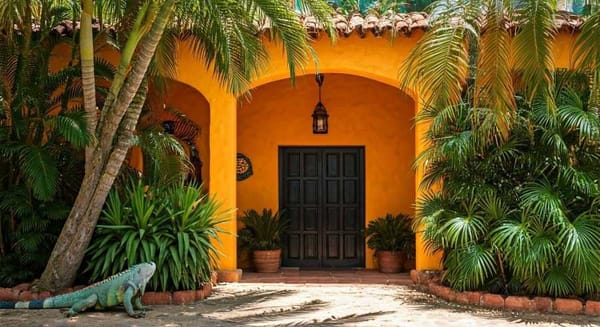Juan Cordero's work in San Ildefonso: That precursor mural that was destroyed
Tempera is one of the oldest and most traditional methods of painting, and Juan Cordero used it to paint his mural "The Triumph of Science and Work over Envy and Ignorance."

The muralist movement in Mexico started in 1921 with Roberto Montenegro's mural "El árbol de la vida," which was finished in 1922. This was followed by a series of works in the Ex-Colegio de San Pedro y San Pablo and the Escuela Nacional Preparatoria, which have been discussed in the Gaceta UNAM all year.
Muralism was an artistic movement of the post-revolution, although, of course, it has important precedents. Doctor Atl is known to have planned for students at the Escuela Nacional de Bellas Artes to paint murals on the walls of the Escuela Nacional Preparatoria during the late Porfiriato, but the Revolution stopped the project from happening at that time.
It would be a long time to refer to the different historical periods in which mural painting was important for the ancient societies of Mesoamerica and colonial society. There was a project that was almost forgotten when Montenegro and Diego Rivera started their murals, but it has a lot in common with the ones that came after.
In 1874, the mural El triunfo de la ciencia y el trabajo sobre la envidia y la ignorancia (The Triumph of Science and Work over Envy and Ignorance), by Juan Cordero, was unveiled. It was an allegory of knowledge, making it appropriate for a school, and therefore similar to other murals that have been reviewed but dating from the twentieth century.
For reasons that have not been thoroughly investigated but which seem to be related to a change in cultural preferences, the mural was replaced by a stained glass window in the last years of the 19th century. An essay by Omar Olivares, complemented by an interview, gives an account of this important work of art that was destroyed but which, fortunately, we can learn about thanks to a copy made by a student of the National School of Fine Arts.
Around 1874, commissioned by Gabino Barreda, director of the National Preparatory School (which was then located in the Antiguo Colegio de San Ildefonso) in the Historic Center of Mexico City, the Puebla painter Juan Cordero (1822–1884) painted the mural El triunfo de la ciencia y el trabajo sobre la envidia y la ignorancia on one of the walls facing the stairs of that educational precinct.
What is considered the first secular mural of the National Preparatory School was inaugurated on November 29 of that same year by Barreda himself, who had been a disciple of Auguste Comte in France and was a determined promoter of the philosophical doctrine elaborated by this French philosopher and writer: positivism, which, as is known, establishes that the only means of knowledge experience, proven or verified using the senses.
"That is why it is possible to think that Barreda would have told Cordero what the theme of the mural should be: that is, an allegory of science and industry," says Omar Olivares Sandoval, a researcher at the Instituto de Investigaciones Estéticas (Institute of Aesthetic Research).
Copy of Juan Cordero's mural
In 1900, the Cordero mural was destroyed and replaced by the stained glass window La bienvenida, fabricated by the Royal Bavarian Establishment F. X. Zettler of Munich, Germany.
"Cordero had already passed away when this happened. However, the person who decided to destroy his mural and replace it with the stained glass window La bienvenida was Vidal Castañeda y Nájera, at the time director of the Escuela Nacional Preparatoria. The reasons for this decision are not clear. Art historiography has assumed that Justo Sierra's moods and his preference for modernism are behind it; that is, it had to do, on the one hand, with a critical view of academic art as representative of the currents that should be overcome and, on the other hand, with a lack of desire to preserve Cordero's mural. At that time no one protested its destruction, even though there were dissonant voices that opposed the taste that was imposed at the turn of the century", Olivares Sandoval points out.
Shortly before the destruction of the mural El triunfo de la ciencia y el trabajo sobre la envidia y la ignorancia, a student of the San Carlos Academy, Juan M. Pacheco, made a copy of it in oil on canvas that currently belongs to the collection of the National Museum of Art, but which, in the opinion of the university researcher, is very different, in pictorial terms, from what is known of Cordero's work.
"It is more an exercise of a student of the Academy. De Mata Pacheco may have made this copy to preserve Cordero's iconography and, also, as an act of protest against the destruction of his mural."
Tempera
The mural "The Triumph of Science and Work over Envy and Ignorance" was painted with a technique called tempera, which is one of the oldest ways to paint. It involves dissolving the color in water and thickening it with animal fat, egg yolk, casein, gum, or glycerin.
"In the 19th century, the Nazarenes and the Pre-Raphaelites renewed this historic technique, which has the peculiarity that it can be used directly on a surface, usually wood. The curious thing is that Cordero frequently used it in other murals, like the ones he painted on the dome of the Temple of Santa Teresa la Antigua (today Museo Ex- Teresa Arte Actual), with a very interesting iconography, and in the dome of the Church of San Fernando, "adds Olivares Sandoval.
Complex work
Cordero's mural was a classical composition. At the base of the pavilion, under the word Science, the phrase "To know to foresee" was written; and under the word Industry, the phrase "To foresee to act".
According to the researcher, Cordero linked the composition of this work to the positivist motto "Love as a principle, order as a basis, progress as an end", by Comte, or to the motto "Liberty, order, and progress", which Barreda formulated based on the former. Therefore, it is a positivist allegory.
"In the center of the mural appeared Minerva, the goddess of wisdom, enthroned in a Tuscan building and exalted by two little genii holding Trentine laurel wreaths as emblems of glory and strength. The goddess was dressed in green and red, with her characteristic attributes: the golden helmet and the buckler or small shield with the effigy of Medusa as an expression of triumph over chaos. At the feet of Minerva sat two allegorical figures, each of which was identified by her name painted in false relief: on the left, Science, personified by a brown-haired woman operating the tangent compass, a device that had been invented in 1825 by the Frenchman Claude Pouillet to measure the intensity of electric current and which was also associated with the measurement of magnetism, both physical phenomena very present in the 19th century in various scientific disciplines and the idea of progress and technification of societies; and on the right, Industry, personified by a blonde woman who with her left hand introduced a rod into a flask from which steam emanated and who rested her right arm on a sphere located behind a third little genie who asked for silence with a gesture. On the flanks there were two scenes: on the left, a ship touching port and men unloading their merchandise as a clear reference to overseas trade; and on the right, a railroad running between plains and mountains, and, below it, an allegorical figure of ignorance fleeing in terror and, next to it, Clio, the muse of History, with her back to the scene, writing on a tablet," he explains.
It is noteworthy how, due to its complexity and associations, this allegory (in a classical, academic sense) was linked to an educational and philosophical project such as positivism.
Finally, Olivares Sandoval says: "The muralism of the 19th century, not only the one produced in Mexico City but also other regions of the country, makes up a wide range that undoubtedly requires a re-reading. And I would emphasize that, at present, art history proposes to generate a reading on the history of the destruction of works such as this one."




